The walls that talk
Medellin, Colombia, February 11, 2016 -- I returned to my native city of Bogota recently for the first time in eight years. What struck me most was the graffiti that has sprouted on the walls of the city to such an extent that when you see a blank wall, you feel there’s something wrong.
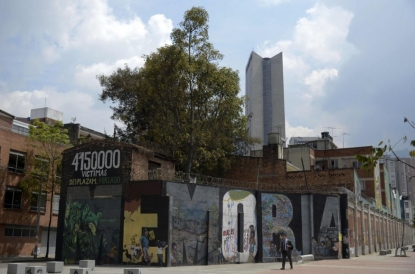 Bogota, January, 2016. (AFP / Raul Arboleda)
Bogota, January, 2016. (AFP / Raul Arboleda)At the moment, Colombia seems to be at the end of a complex five decade-old conflict that has killed 220,000 people, left tens of thousands missing and displaced six million. So the possibility that the conflict will finally end -- that the government and FARC, the country’s main guerrilla force, may finally sign a peace deal -- has raised immense hopes. These hopes have inspired the nation’s creative souls and the peace process is by far the most popular topic of Bogota’s street art.
 Bogota, January, 2016. (AFP / Raul Arboleda)
Bogota, January, 2016. (AFP / Raul Arboleda)As elsewhere, there is debate whether the graffiti constitutes art or vandalism. “The act of painting in the street is in and of itself a political act,” says Toxicomano, an artist known for drawing tortured faces and defiant slogans.
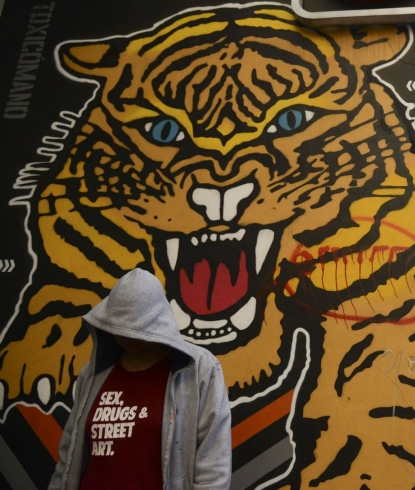 Graffiti artist Toxicomano in front of his painting in Bogota. January, 2016. (AFP / Raul Arboleda)
Graffiti artist Toxicomano in front of his painting in Bogota. January, 2016. (AFP / Raul Arboleda)One thing is clear -- the proliferation of the street art is partly thanks to Gustavo Petro, a former guerrilla fighter who was elected and served as mayor from 2012 to 2015 and who encouraged this form of expression during his mandate. Today there are even tourist tours that have sprung up, showing visitors these outdoor frescoes.
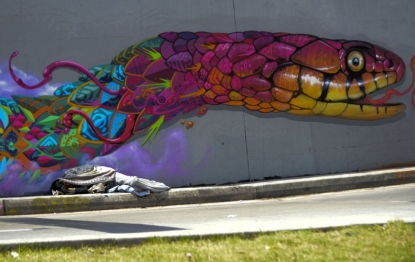 Bogota, January, 2016. (AFP / Raul Arboleda)
Bogota, January, 2016. (AFP / Raul Arboleda)I wanted to do a series of images on this street art and started by the most crime-ridden neighborhoods, in the center of the capital where the graffiti is really everywhere. My favorite photo is that of two doves with the slogan “peace is ours.” Passersby seeing me snapping away in these neighborhoods, where prostitution, drug trafficking and other crime flourishes, helpfully warned me that “you’re going to get your camera stolen.” In the end, nothing happened.
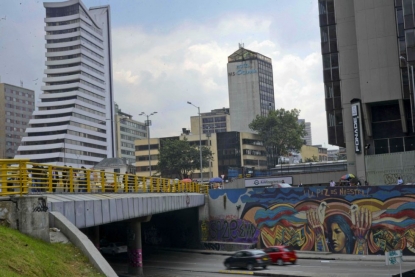 Bogota, January, 2016. (AFP / Raul Arboleda)
Bogota, January, 2016. (AFP / Raul Arboleda)There is also grafitti like this in Cali and in Medellin, Colombia’s second city where I am currently based. These cities were the ones the hardest hit by the war between the army, leftist guerrillas, right-wing paramilitaries as well as violence related to the drug trade. Cali today is considered as one of the world’s most dangerous cities.

Graffiti reads "peace, love, unity in our hearts" in Cali, Colombia. January, 2016. (AFP/Luis Robayo)
The street art in Medellin is different from that in Bogota, which was relatively spared from the violence. It’s more raw here. For example in the neighborhood of former drug kingpin Pablo Escobar, the paintings are of the dark days of the 1980s and 1990s when he was at the peak of his power. Some are of the “Operation Orion” by the police and army that killed him in 2002.
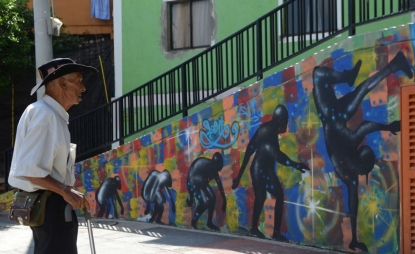 Medellin, January, 2016. (AFP / Raul Arboleda)
Medellin, January, 2016. (AFP / Raul Arboleda)In these streets, which were often the scenes of battles, the street art speaks of the massacres, the fighting, the suffering that these walls had seen. But even here, you often find the word that has made us Colombians dream for so many years. The word “peace,” which has become synonymous with a future that seems at last within our grasp.
Raul Arboleda is an AFP photographer based in Medellin.
This blog was written with Roland de Courson and translated by Yana Dlugy in Paris.
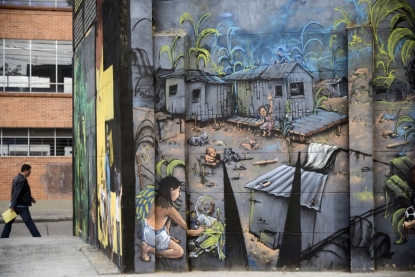 Bogota, January, 2016. (AFP / Raul Arboleda)
Bogota, January, 2016. (AFP / Raul Arboleda)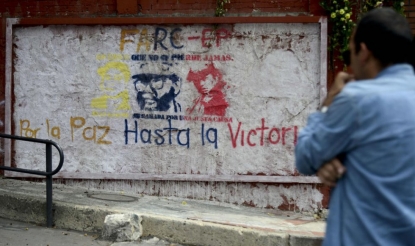 Bogota, January, 2016. (AFP / Raul Arboleda)
Bogota, January, 2016. (AFP / Raul Arboleda)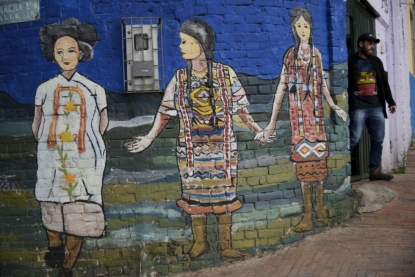 Bogota, January, 2016. (AFP / Raul Arboleda)
Bogota, January, 2016. (AFP / Raul Arboleda) Bogota, January, 2016. (AFP / Raul Arboleda)
Bogota, January, 2016. (AFP / Raul Arboleda)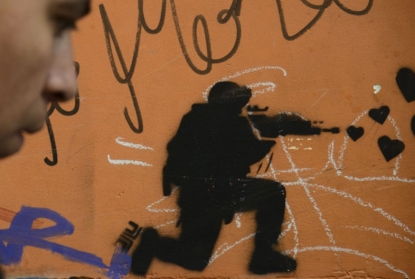 Bogota, January, 2016. (AFP / Raul Arboleda)
Bogota, January, 2016. (AFP / Raul Arboleda)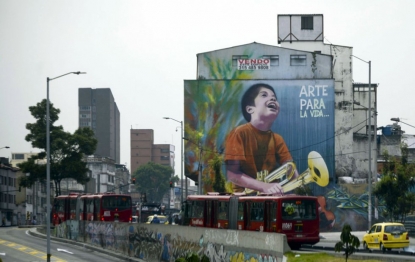 Bogota, January, 2016. (AFP / Raul Arboleda)
Bogota, January, 2016. (AFP / Raul Arboleda)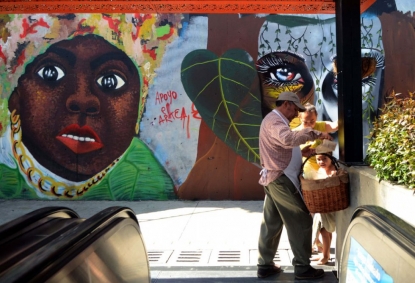 Medellin, January, 2016. (AFP / Raul Arboleda)
Medellin, January, 2016. (AFP / Raul Arboleda)

